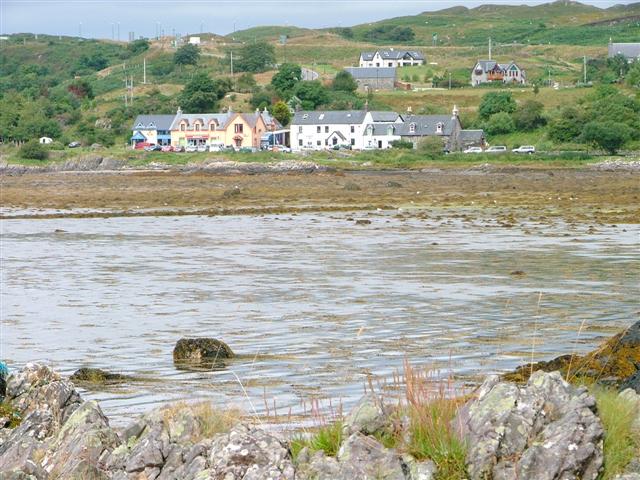I first set eyes on Eilean Donan on a driving holiday in Scotland, when we were on our way to make the crossing to Skye, and it was love at first sight. The name refers to the little island (eilean) of Donan, in Loch Duich, which is a continuation of Loch Alsh, but what makes it so special is the impossibly romantic
castle perched on top of it. This must surely be one of the most photographed beauty spots in the whole of Scotland, so much so that anyone happening upon it for the first time is bound to experience a feeling of 'deja vu'. Sadly we didn't have time to visit the castle on that occasion, something I intend to rectify one day. For those who do make the time, it is open from March to October. The castle was originally built as protection against the Vikings, and over the years it evolved, reaching its maximum size in medieval times, but subsequently shrank, probably because less men were required to defend it. The castle's destruction came about during the Jacobite risings, but in the 20th century the island was bought by one Colonel John Macrae Gilstrap, who set about restoring the castle to its former glory, a task which was completed in 1932.
Not surprisingly, such a stunning location is bound to be popular with film-makers. Eilean Donan has made appearances in the James Bond film The World Is Not Enough, starring as the Castle Thane Headquarters of MI6, in Entrapment as the castle owned by Robert MacDougal (Sean Connery), in Highlander, Elizabeth: The Golden Age and Rob Roy, among others. In 2006 Eilan Donan castle was depicted in an unusual light, literally, when the artist Gerry Hofstetter
illuminated the whole exterior of the castle with the Scottish flag, the Lion Rampant and the tartan of the clan MacRae.
Live streaming webcam view of the castle.
Map of the area.












